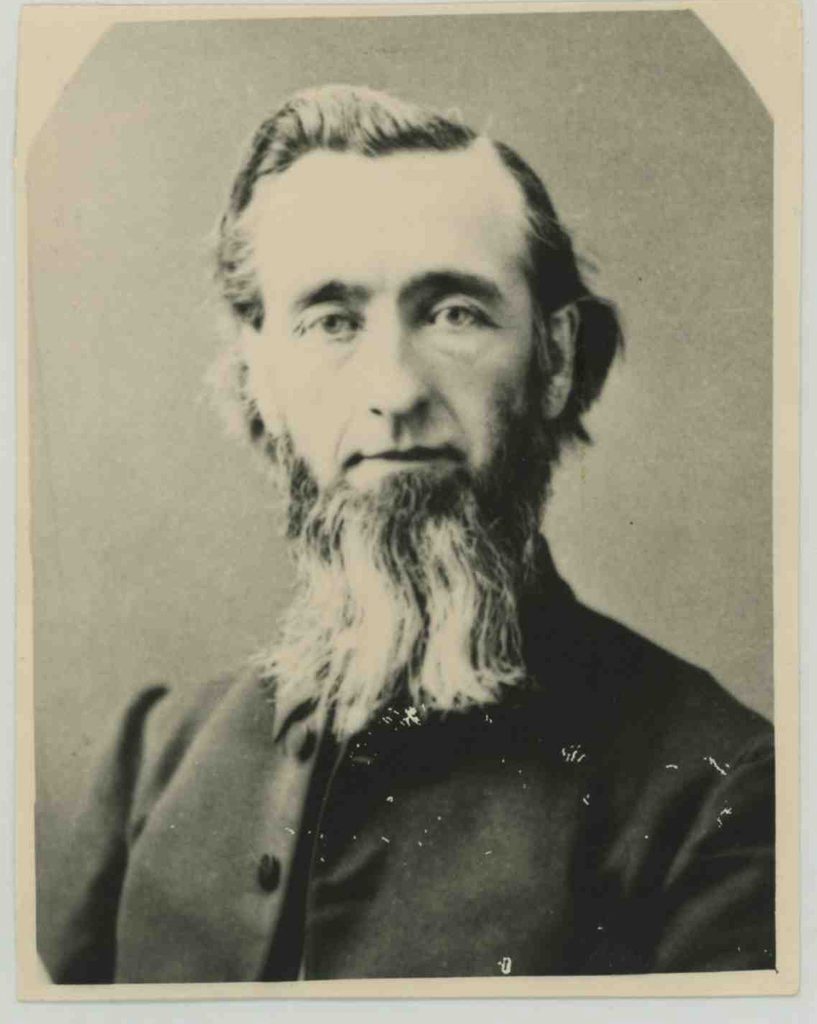James Woodward Strong

Dr. James W. Strong was born on September 29, 1833, in Vermont. As a child, he had poor health which continued into adulthood. In spite of his frailty, he began his working career at age 14 and began teaching in 1850 at age 17. In 1851, he moved to Wisconsin to attend Beloit College. While there (1851 to 1861) he held jobs including telegrapher, city clerk, superintendent of schools, secretary of the Library Association, and Secretary of the State Teachers Association. He graduated in 1858 and earned his Masters degree in 1861. After graduation, he was married and worked for a year as a newspaper correspondent.
Then Strong decided to enter the Union Theological Seminary in New York. He was ordained in 1862, and in 1865 became the successful pastor of the Plymouth Congregational Church in Faribault. His Church selected Northfield as the site of a new college. Once established, Strong was chosen as a trustee, a position he held until 1903.
In September of 1870, Strong was invited to become President of what was then called Northfield College. He declined the invitation. The College had been chartered four years earlier and had been in session three years. Attendance had been uneven; no qualified college students had registered and no college courses had been taught. Work on the first building had been halted due to unworthy brick and unclaimed pledges. Finances were shaky and a two-year effort to secure working capital had ended in dismal failure. To preside over this situation, Strong was again offered the position at a salary of $1,300 plus $200 expenses.
Strong was challenged now to build the college for “the betterment of men and the glory of God.” He was installed with a single prayer and no inauguration ceremony. By nightfall, his remarks and appeal for money resulted in pledges of $16,000. He traveled to Boston determined to raise funds and armed with the authority to name the college after anyone who would donate $50,000 or more.
His appeal stirred the hearts of William Carleton and Susan Willis; together they gave $18,000. While in Boston, Strong was in a very serious carriage accident and suffered severe head injuries. It took months of bedside nursing by Mrs. Strong before he was able to resume normal living. Early reports said Strong had died, which shocked William Carleton. Carleton was so impressed with his miraculous survival — as if saved for a divine purpose — that he donated $50,000. Hence, the name Carleton College.
By 1882, Strong’s administration witnessed the acquisition of 40 campus acres, the construction of six buildings, the cataloguing of 14,000 library books, the growth of the faculty from 4 to 24, the growth of the students from zero to 237, and in collegiate graduates from zero to 480. The Carleton Arboretum, believed to be the first in Minnesota, had its beginning in the 1890s.
In his official 1884 report concerning the purpose of Carleton, Strong said, “From the beginning, Carleton College has stood for a high standard of scholarship combined with spiritual training, a broad, thorough, systematic culture, the fruitage of which is Christian manhood. Piety is not accepted as a substitute for brains, nor a good intent for accurate scholarship, but Christian character is held to be the ultimate end of all education.”
Strong House

Strong built the house at 118 College Street in 1875. He and his wife raised three sons and lived out the rest of their lives there. In 1903, Strong resigned as President and spent his time in quiet study and travel, never losing his close contact with the college. Strong sold the home to his son in 1912 for $1.00. His son owned the house till 1925. Strong passed away quietly in his sleep on February 24, 1913, at the age of 80. The story said that as news of Strong’s death spread through the city, “there was a noticeable hush, a hush not caused so much by sorrow as by as love and by sincere thankfulness that such a noble life was granted so beautiful an ending.”
(Paraphrased from an article in the Northfield News, June 11, 2000.)